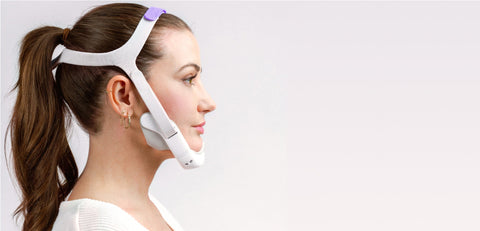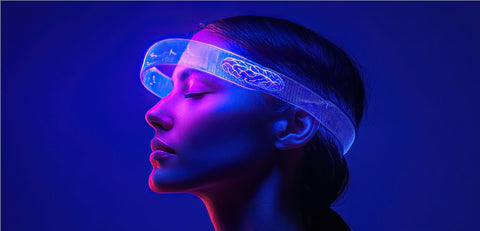Bruxism and attention deficit hyperactivity disorder (ADHD) are two conditions that, at first glance, appear distinct. However, recent research reveals an intriguing association between the two conditions. In this article, we will explore in depth the relationship between bruxism and ADHD, their shared mechanisms, and the implications for diagnosis and treatment.
Understanding Bruxism and ADHD
What is bruxism?
Bruxism is a disorder characterized by involuntary grinding or clenching of teeth, usually during sleep. This can lead to tooth wear, jaw pain, headaches, and sleep disturbances.
Definition of ADHD
Attention deficit hyperactivity disorder (ADHD) is a neurodevelopmental disorder characterized by difficulty paying attention, hyperactivity, and impulsivity. It often affects children but can persist into adulthood[1].
The Link Between Bruxism and ADHD
Increased prevalence of bruxism in individuals with ADHD
Recent studies have highlighted a significant association between ADHD and bruxism. Children and adolescents diagnosed with ADHD have a higher likelihood of developing nocturnal or diurnal bruxism compared to those without ADHD[1].
Common neurological mechanisms
Researchers suggest that the link between bruxism and ADHD may be explained by shared neurological mechanisms. Both conditions involve disruptions in neurotransmitter systems, including dopamine, which plays a crucial role in motor control and attention regulation[2].
Impact on oral and general health
Consequences of bruxism in ADHD patients
Bruxism in people with ADHD can have significant consequences on their oral health. Premature enamel wear, temporomandibular pain, and chronic headaches are common problems[1].
Effects on sleep and quality of life
The combination of bruxism and ADHD can significantly affect sleep quality, exacerbating daytime symptoms of ADHD and negatively impacting patients' overall quality of life[2].
Diagnosis and evaluation
Importance of early detection
Given the association between bruxism and ADHD, early screening is crucial in children and adults with symptoms of either disorder. A comprehensive evaluation should include a thorough dental examination and neuropsychological assessment[1].
Diagnostic tools
Healthcare professionals use a variety of methods to diagnose bruxism and ADHD, including standardized questionnaires, clinical examinations, and, in some cases, sleep studies for nocturnal bruxism (polysomnography)[2].
Therapeutic approaches
Conventional treatments
Traditional treatments for bruxism include the use of occlusal splints and relaxation techniques. For ADHD, behavioral therapy and stimulant medications are commonly prescribed[1].
Therapeutic innovations
New approaches are emerging to treat bruxism and ADHD simultaneously. Among them, Bruxless stands out as the most promising solution. Our innovative medical device, currently in the final stages of development, aims to treat bruxism non-invasively thanks to its patented technology, offering an alternative to traditional methods such as mouth guards and Botox injections.
Bruxless: A revolutionary solution
Cutting-edge technology
Bruxless uses advanced technology based on Functional Proprioceptive Stimulation (FPS). This system detects contractions of the masseter muscles and applies targeted vibrations at a certain frequency and intensity to relax the jaw, thus interrupting bruxism episodes.
Benefits for ADHD Patients
For patients suffering from both bruxism and ADHD, Bruxless offers several advantages:
- Non-invasive and comfortable treatment
- Improved sleep quality
- Reduction of symptoms associated with bruxism
- Potential to alleviate side effects of ADHD medications that may exacerbate bruxism
Holistic Management of Bruxism and ADHD
Multidisciplinary approach
Effective management of bruxism in ADHD patients requires a multidisciplinary approach involving dentists, neurologists, psychiatrists, and other specialists. This collaboration allows for comprehensive management of both conditions[2].
Prevention strategies
Prevention plays a crucial role in the long-term management of bruxism and ADHD. Relaxation techniques, improved sleep hygiene, and lifestyle modifications can help reduce symptoms of both disorders[1].
Research perspectives
Current studies
Research is ongoing to better understand the underlying mechanisms linking bruxism and ADHD. These studies could pave the way for new targeted therapeutic strategies[2].
Future directions
The future of bruxism treatment in ADHD patients may include personalized therapies based on individual genetic and neurobiological profiles. Innovations like Bruxless are at the forefront of these developments, promising more effective and less invasive solutions.
Conclusion
The link between bruxism and ADHD is a fascinating area of research that continues to evolve. Understanding this association opens new avenues for the diagnosis and treatment of both conditions. With the emergence of innovative solutions like Bruxless, patients have more and more options to effectively manage their symptoms and improve their quality of life.
Managing bruxism in people with ADHD requires a holistic approach, combining traditional treatments with technological innovations. By staying informed about the latest advances and working closely with healthcare professionals, patients can look forward to a future where bruxism and ADHD are better understood and more effectively treated.
--------------------------











